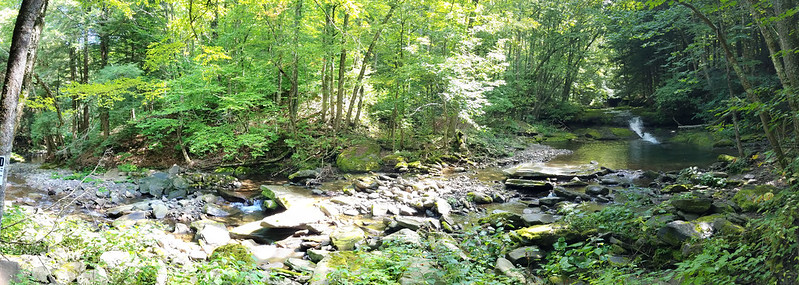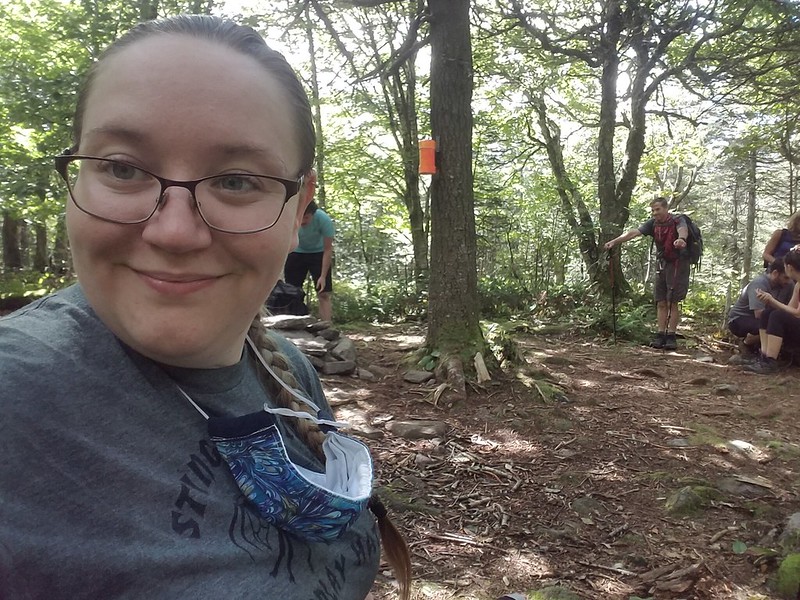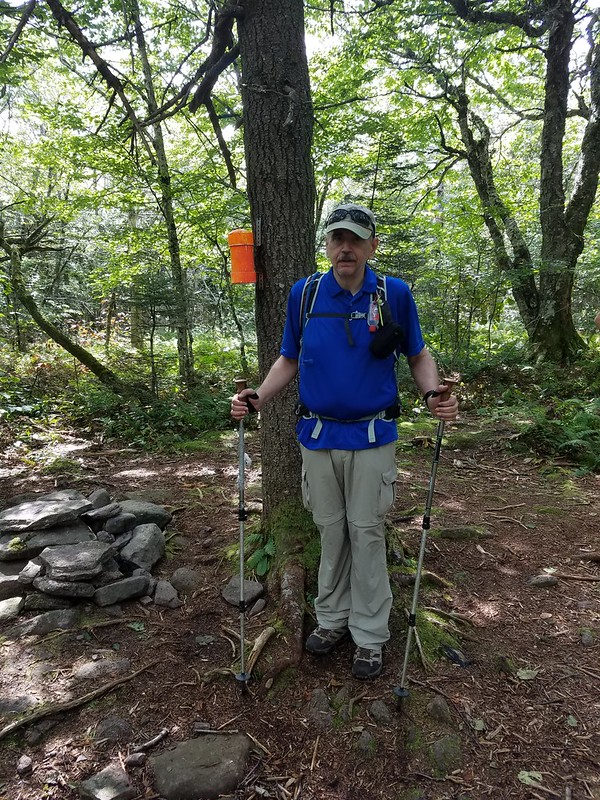I realize that I'm over a year behind on trip reports. This post is the start of a series where I'm blogging the 'back catalogue' of stuff I've done, so that I have something electronically searchable, and so that I no longer have to puzzle out the smudged handwriting in my journal.
On August 10, 2018, I decided to go hiking and try to get a view for a change. I had been kind of 'taking a reset', because all my eye and foot problems had me mostly off the trail for a few years. Because of this, I kind of wanted some intermediate-level stuff to get back on my feet: hard enough to be challenging, enough views to be rewarding, but something less than the trips I'd been accustomed to - multiple bushwhack high peaks in a single day is surely something I need to work back up to!
The Lake George 12ster had kind of caught my eye as being at that level. Other people's pictures looked lovely. I'd done Buck Mountain at some point a very long time ago and remembered it as having a nice view. I decided to start with Cat and Thomas Mountains.
This is where I'd ordinarily insert some observations about history of the names, but I'm coming up blank. My best guess is that the 'Thomas' of Thomas Mountain is a family name, and that Cat Mountain is named for the cougars (Puma concolor) that formerly inhabited New York State. The two mountains are the most salient features of a preserve that was purchased by the Lake George Land Conservancy in 2003, less because of its recreational value than to protect the water quality of Edgecomb Pond, the reservoir that provides the Town of Bolton with its drinking water. Ten years later, the conservancy sold the land to New York State, and it's now part of the Lake George Wild Forest.
Forecast weather was usual for August, “25% chance of late-afternoon showers.” I can live with that! I chose the Edgecomb Pond parking area simply because it's less popular. The trail started out on a woods road, still used by the township for maintenance, that circles the pond. The waterworks are in a pretty, park-like setting, glimpsed here from across the reservoir.

Just after the pond, I started up Cat Mountain on a red-blazed trail. The trail started out pretty clear (except for my color-blindness!) but pretty rapidly faded to a level of marking typical of a wilderness trail. Going a couple of hundred yards without seeing a marker or paint blaze was not uncommon. Still, it wasn't hard to follow. The trail is on DEC's map, but isn't in the preserve's brochure, probably because the conservancy doesn't want newbies getting lost there, or falling off a cliff.
Nearing the top of the mountain, the trail gets steep and scrambly among the cliffs. It starts to give glimpses of the southern end of Lake George, with the Tongue (the large peninsula that juts into the west side) at left, Lake George Village to the right, and the ridge of Black Mountain, Mount Erebus, Sleeping Beauty, Buck Mountain and Pilot Knob across the lake.

The summit had a number of other hikers on it, so I didn't get a really good capture of the panoramic views. I found a spot to sit and eat lunch, and was joined a little way off by a nice couple with an even nicer dog. I think I made a friend for life when I gave the pooch the last bite of my sausage. (With the owners' permission, of course!) In place of the last bite of sausage, I gathered a handful of blueberries from the bushes growing from cracks in the rock. There's a survey benchmark in there somewhere, but I didn't trouble to search for it.

As I started down, I corrected my altimeter, and noticed that the barometer was falling. As I enjoyed the fine view of the southern Adirondacks spread out before me to the west, I also mentally upped that “25% chance of showers” estimate: those clouds were starting to look a bit ugly.

I continued circling the preserve on the yellow-blazed Richard Hayes Philips Trail, which is a strenuous walk along a ridge line with occasional scrambles. I continued keeping a literal weather eye out. Those clouds looked to be getting closer.
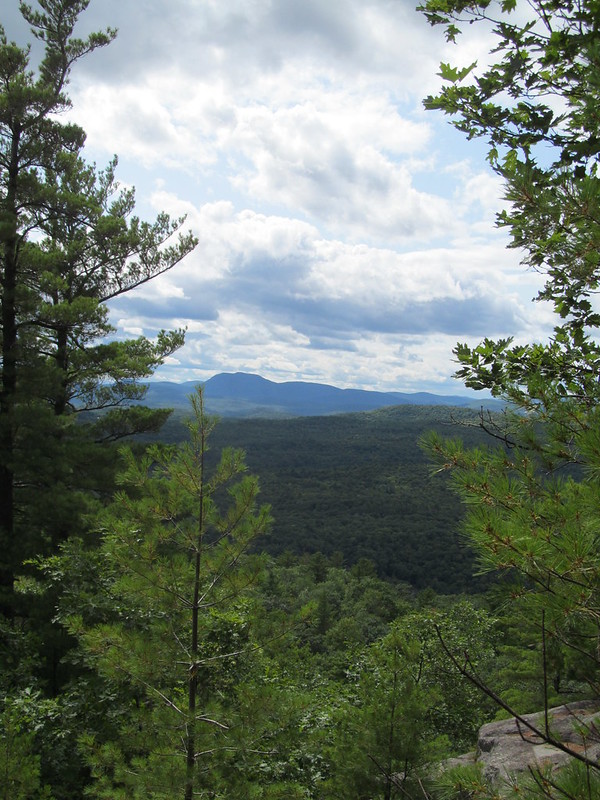
Just before the summit of Thomas Mountain, the trail made a couple of quick switchbacks up a cliff face, the sketchiest footing of the day. It then came up onto a cleared ledge, again with a nice view south over the lake. This clearing had been the site of a cabin until the conservancy bought the land. For several years, the cabin was open to hikers as a campsite, but it was abused, and became a health and safety concern. When DEC took over the land, it was also declared incompatible with a Wild Forest. It was of negligible historic value, having been built in the 1990's. DEC eventually demolished it at the end of 2017.
From the cabin site, the trail makes its way out on the cabin's gravel driveway. As I trundled down the driveway, I suddenly was glad that the rock scrambling was over for the day, since suddenly I was in a downpour. I donned my rain jacket and continued, making the turn back onto the blue-blazed woods road that leads back to Edgecomb Pond. There were a couple of spots of wet footing where the streams were starting to flow, and few photo opportunities, although I managed to grab one shot of a beaver pond in the pelting rain.
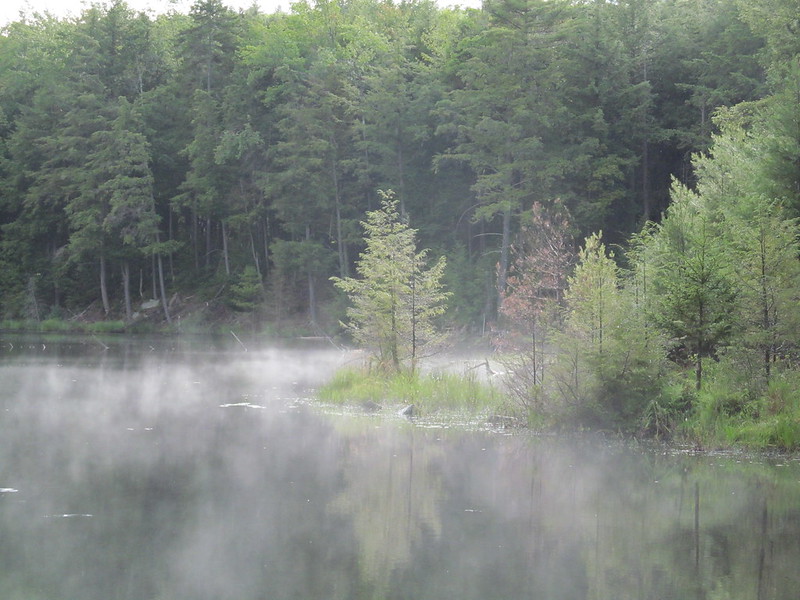
I got to the parking lot as the storm was blowing over and daylight was starting to fade. I found that I was the only car there, except that I was surprised by a local cop turning into the lot just as I was changing out of my sodden hiking gear into dry “town clothes” If they noticed that they'd caught me in an em-bare-assing position, they chose not to say anything, or even acknowledge my presence, and drove on. Whatever they were looking for, it wasn't a wet and tired hiker getting ready to leave.
I'd had in mind the secondary possibility of checking out the view from The Pinnacle, another knob of rock just a mile away, but I'd got a late start and then been slowed by the weather. Maybe another time. [Post hoc: The Pinnacle is now closed to the public. I presume that it's because of the Great Plague, and at some point it can reopen. It would be a quick side trip if I happen to be in Bolton Landing with a couple of hours to kill.]
Read more...


